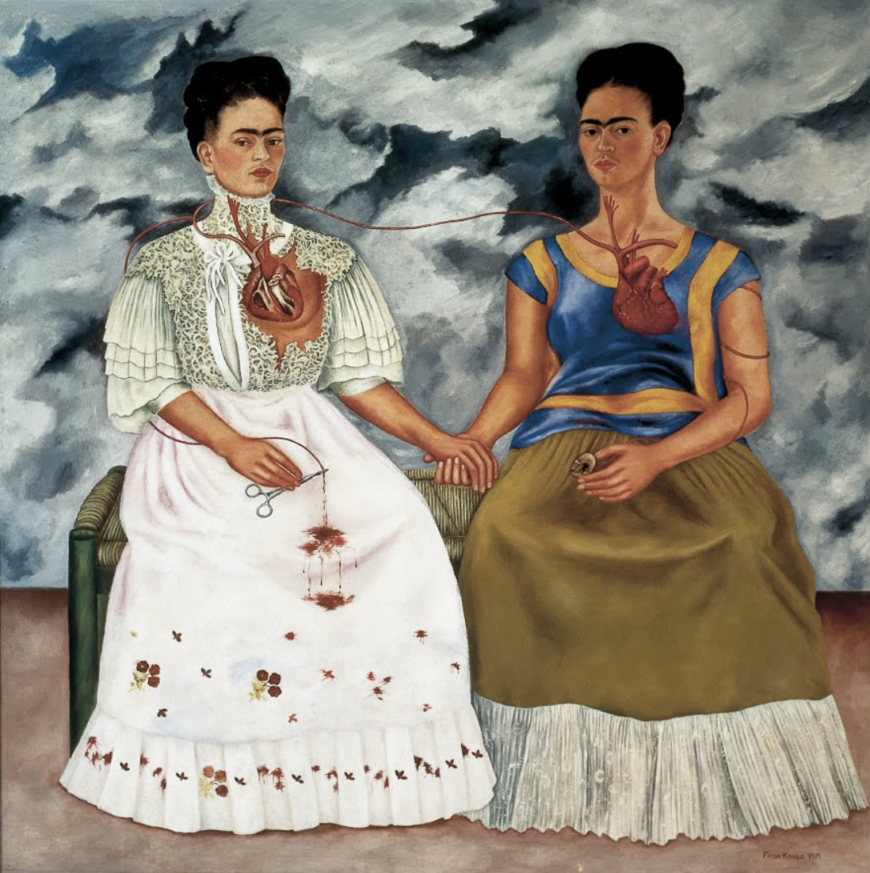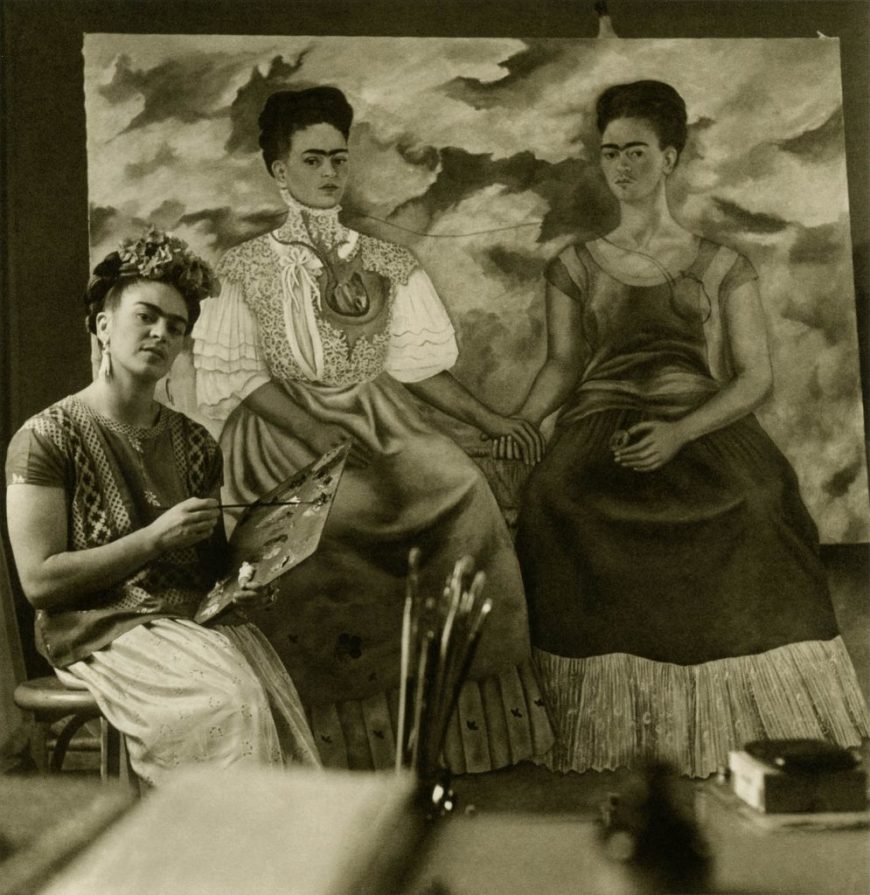Frida Kahlo, The Two Fridas

Born to a Mexican mother and German father, the painter Frida Kahlo (1907-1954), who married Diego Rivera, used the details of her life as powerful symbols for the psychological pain of human existence. Art historians often consider Kahlo a Surrealist due to the psychic, autobiographical issues she dealt with in her art. Kahlo herself, however, rejected any association with the Surrealists. She began painting seriously as a young student, during convalescence from an accident that tragically left her in constant pain. Her life became a heroic and tumultuous battle for survival against illness and stormy personal relationships.
Typical of her long series of unflinching self-portraits is The Two Fridas, one of the few large-scale canvases Kahlo ever produced. The twin figures sit side by side on a low bench in a barren landscape under a stormy sky. The figures suggest different sides of the artist’s personality, inextricably linked by the clasped hands and by the thin artery stretching between them, joining their exposed hearts. The artery ends on one side in surgical forceps and on the other in a miniature portrait of her husband as a child. Her deeply personal paintings touch sensual and psychological memories in her audience.
To read Kahlo’s paintings solely as autobiographical overlooks the powerful political dimension of her art. Kahlo was deeply nationalistic and committed to her Mexican heritage. Politically active, she joined the Communist Party in 1927 and participated in public political protests. The Two Fridas incorporates Kahlo’s commentary on the struggle facing Mexicans in the early twentieth century in defining their national cultural identity. The Frida on the right (representing indigenous culture) appears in a Tehuana dress, the traditional costume of Zapotec women from the Isthmus of Tehuantepec, whereas the Frida on the left (representing imperialist forces) wears a European-style white lace dress. The heart, depicted here in such dramatic fashion, was an important symbol in the art of the Aztecs, whom Mexican nationalists idealized as the last independent rulers of their land. Thus, The two Fridas represents both Kahlo’s personal struggles and the struggles of her homeland. [1]

Anatomy of Two Fridas
The two Fridas clasp hands tightly. This bond is echoed by the vein that unites them. Where one is weakened by an exposed heart, the other is strong; where one still pines for her lost love (as underscored by the vein feeding Rivera’s miniature portrait), the other clamps down on that figurative and literal tie with a hemostat.
Human anatomy is often graphically exposed in Kahlo’s work, a topic she knew well after a childhood bout with polio deformed her right leg and a bus accident when she was eighteen years old left her disabled and unable to bear children. She would endure 32 operations as a result.

“I am the person I know best”
Photographs by artists within her milieu, like Manuel Alvarez Bravo and Imogen Cunningham, confirm that Kahlo’s self-portraits were largely accurate and that she avoided embellishing her features. The solitude produced by frequent bed rest—stemming from polio, her near-fatal bus accident, and a lifetime of operations—was one of the cruel constants in Kahlo’s life. Indeed, numerous photographs feature Kahlo in bed, often painting despite restraints. Beginning in her youth, in order to cope with these long periods of recovery, Kahlo became a painter. Nevertheless, the isolation caused by her health problems was always present. She reflected, “I paint self-portraits because I am so often alone, because I am the person I know best.”[2]
- Fred S. Kleiner, Gardner’s Art Through the Ages: The Western Perspective, vol. 2, 15th ed., (Boston: Cengage Learning, 2017), 822-823. ↵
- Dr. Doris Maria-Reina Bravo, "Frida Kahlo, The Two Fridas (Las dos Fridas)," in Smarthistory, August 9, 2015, accessed March 2, 2023, https://smarthistory.org/kahlo-the-two-fridas-las-dos-fridas/. ↵

